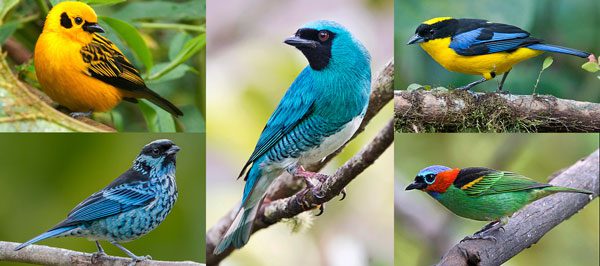Just like how everything that glitters is not gold, similarly, every bird that sings is not a songbird. Songbirds belong to a group of birds called a suborder. They have special muscles around their syrinx that help them tune differently than other birds.

Songs and birds have always been associated together. After multiple research by ornithologists and biologists, it was analysed and decreed that the birds that sing melodiously are different from the birds that don’t. They were then referred to as oscines, a suborder of birds which describes the difference between their vocals.
What are songbirds?
Birds, like all other living beings, have been divided into orders and suborders. Perching birds, which are identified due to different toe arrangements, have an order called Passerines. Passerines are further broken down into three suborders. The largest of these is Passeri, which is where songbirds, or Oscines, belong.

The one speciality that makes these birds of oscines different from other birds is the specialized muscles around their syrinx, which provide them with better control of their vocal cords. When they can control this ability, it helps them sound different from other animals.
As not every singer is a legendary singer and cannot be good from their initial days, oscines have different regions across the globe which report several differences in them. Oscines are very adaptable and adjust to their environment and evolve to survive.
Survival for songbirds may include fighting prey or wooing a mate.
The Charisma of Songbirds
Oscines are different from other birds not only because of their ability to sing melodiously, but also because they are pleasing to the eye. If it’s not their voice that grabs the attention at first, then it’s their colour. The beautiful and striking plethora of hues mesmerizes the viewer equally as their voice. This is the combination through which they maintain the charisma of their sub-order.

Beautiful songbirds like Hummingbird, Indian peafowl, Goldian finch, Northern Cardinal, Rainbow lorikeet, Crimson sunbird, and many more have been very popular since time immemorial.
But anything that is beautiful beyond explanation creates a human desire for possession. Subsequently, with their jewel of voice and color, there has been a threat. Colorful songbirds are in danger of going extinct, just like many other types of birds.
The reason behind such an unnatural process of extinction is the trade of songbirds. They could easily survive in their natural environment with their voice, but humans, who see their melody as nothing more than for their own benefit, harm them through capture and trade.
Scare of the brightly colored songbirds
A business born out of colorful songbird exploitation has rendered this particular sub-order of Parries endangered. As with becoming a target, it has become more and more necessary for the governments around the globe to procure procedures for protection of this sub-order.

A recent study into passerines suggested that despite oscines being a suborder of passeri, they might not be the only ones with colorful songbirds. It indicates, as per the study published in The Wilson Journal of Ornithology, that the suboscine bird, Three-wattled Bellbird, honed its tune in order to survive, providing evidence for songbirds existing outside the suborder oscine.
This discovery is an easy target for bird poachers. The illegal capture of nature’s belongings is a punishable offence. These are not the times where poaching might go unnoticed. With climate change, it is not only technology that adds to the changes in the environment, but humans who perform such heinous actions as poaching do so as well.
Colorful songbirds: reports and takeaways
Increased poaching and extinction threats have been brought to the attention of agencies involved in animal protection. Extinction through natural processes, with the passage of time, is the only acceptable factor that can be agreed on, but poaching and trade cannot.
Attempts are being made to counter the trade of colorful songbirds to help them thrive in such harsh conditions. Their beautiful color has been found as the main reason for their capture, pointing to the fact that humans are buying them for their limitless beauty.

Since songbirds are also part of multiple cultures in Asia, research has suggested that instead of a strong approach towards eliminating an important part of any culture, the birds of specific endangered species can be captive-bred and then set free.
Freezing certain species, be it a bird or any other living being in the animal kingdom, in order to supplicate their survival is the new approach which can lessen the chances of extinction.
With advancements in science and technology, there is still hope.
Read more: https://tdznkwjt9mxt6p1p8657.cleaver.live/













